The goodness of a fermented vegetable dish
Is there anyone here felt like they need something to spice up their life?
Or maybe just a pinch of spiciness that is enough to elevate yourself?
Well... Kimchi is the key to solutions.
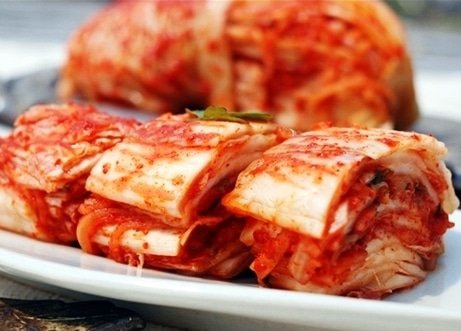
Kimchi is consider as a staple in Korea. It is a traditional banchan (side dish) and it is usually made from fermented vegetables such as napa cabbages and radishes. It includes a variety of seasonings such as gochugaru (Korean red chili pepper powder), green onion, garlic and ginger. If you like the taste of seafood, you may add seasonings such as jeotgal (salted seafood). There are over hundreds variety of kimchi to be made with different types of vegetables as the main ingredients.
Kimchi has many health benefits. I heard many rumors about how Koreans have healthy skin due to large consumption of kimchi. Let me clear this rumor out...
It's pretty true...
Since kimchi is a basic side dish during meal time, it can act as an appetizer that boost the digestive health of the body. According to some juicy information from my Korean friends, kimchi can aid in healthy body development and boost the vision of the eyes. Besides, it also helps in preventing diseases such as cancer and diabetes. It can aid the immune system and remove obesity for people that want a Victoria Secret model's body. Did I mention that kimchi can also reduce one's cholesterol level ? This is definitely a good news for all Nasi Lemak lovers out there.
But all these benefits will be effective after a long term of consumption. (Well..They say honesty is better than sugar coated bullshit)
I made Baekchu Kimchi ( a.k.a. Cabbage kimchi ) is the most basic kimchi among all types of kimchi. It is the most essential banchan ( side dish ) in Korea. It is made with salted , seasoned and fermented napa cabbage. Since kimchi requires time to ferment, it is recommended that you start this process at least a week before you plan to use it. Before you start making kimchi, make sure that you head to the supermarket and buy the Gochugaru (Korean red chili pepper powder) as I found out that our local brand of chili powder is different than the chili powder from Korea. The taste of the end product that used the local brand of chili powder is blander and did not have the strong red pepper chili taste that we usually eat in kimchi. The Gochugaru can be found either in large resealable bag or air-tight plastic container like mine. Last but not least, it is important that you use air-tight glass containers to ferment and store your kimchi as plastic containers will absorb all the pungent smell of kimchi and you will have a hard time of washing them away.
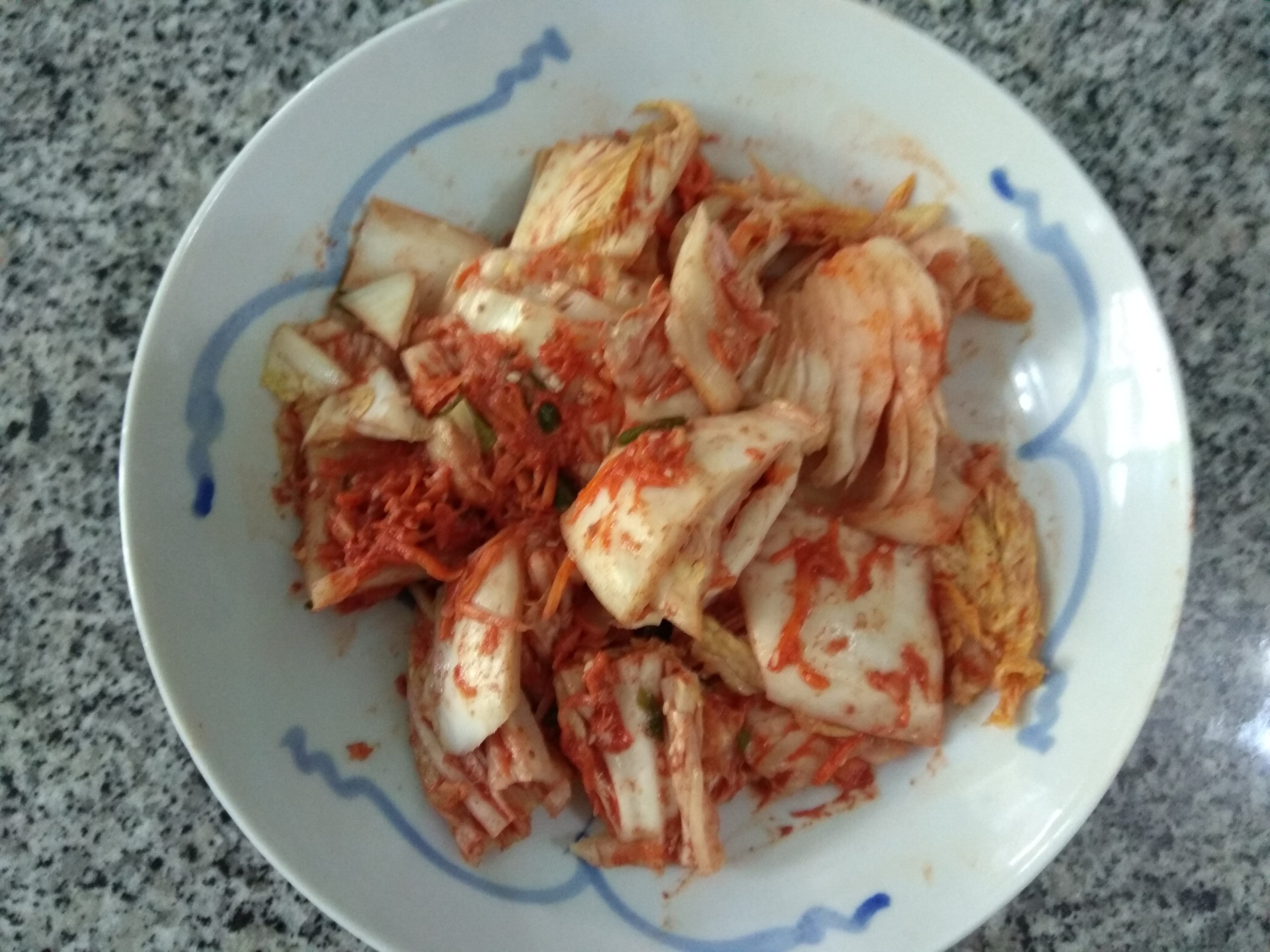
Ingredients
- 1 big Napa cabbage / Chinese cabbage
- 1 daikon radish (peeled and cut into desired shapes - matchsticks /cube)
- 5 spring onions (end trimmed and cut into 1 inch pieces)
- 2 carrots (peeled and cut into the shape of matchsticks)
- 1 fresh pear or 2 red apples (blended into pure juice)
- 1 tbsp minced ginger
- 1 tbsp minced garlic
- 1 cup salt ( preferable iodine-free,natural salt)
- 7 tbsp Gochugaru
- 2 tsp fish sauce
- 1 tbsp glutinous rice powder ( mix with 3 tbsp of water and microwave it for 1 minute)
- 1 tbsp minced dried shrimp (optional -if you want more seafood taste)
- 2 tbsp of toasted sesame seeds
Instructions:
1. Wash the Chinese cabbage and cut them into halves. Make sure that you only cut through the stem and tear the remaining cabbage apart. Running the knife through all the way will unnecessarily cut off the cabbage leaves. Repeat the same procedure again to make quarters.
 2. Prepare 5 cups of cold water and mix about 4 tbsp of salt in a big bowl. It is time to bath the cabbage one by one at a time .Remove the excess water into the bowl and then transfer to another bowl. Set the bowl of used salt water aside.
2. Prepare 5 cups of cold water and mix about 4 tbsp of salt in a big bowl. It is time to bath the cabbage one by one at a time .Remove the excess water into the bowl and then transfer to another bowl. Set the bowl of used salt water aside.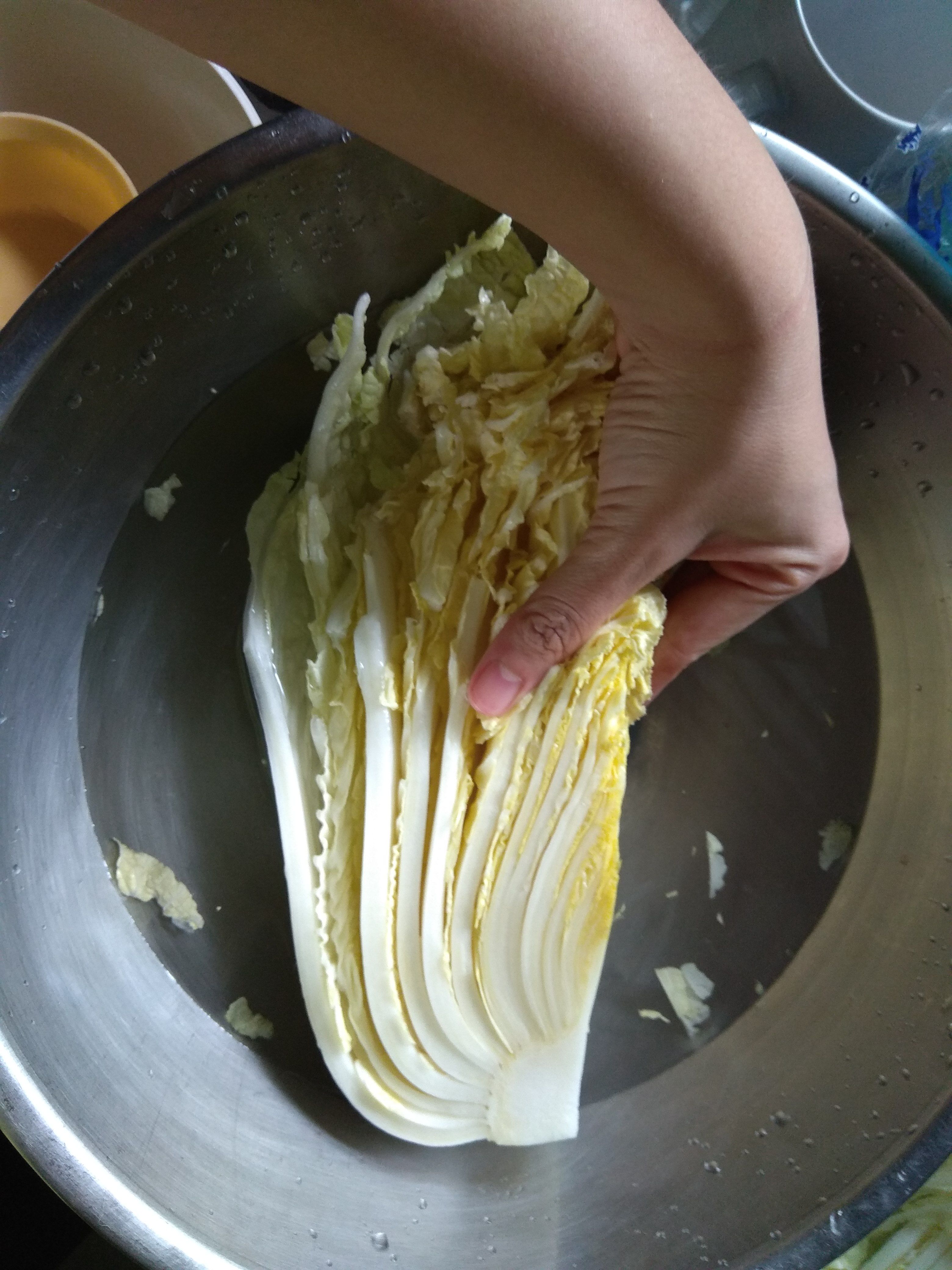
3. Sprinkle the remaining salt in each layer of the cabbage generously, starting from the outermost leaf. This process is similar to salting a piece of meat. You can use more than the remaining amount of salt for this particular step if needed. Repeat with the rest of the cabbage quarters. Pour the used salt water from the previous step over the cabbage. Set aside for about 6-8 hours,rotating the bottom ones to the top every 2 or 3 hours.
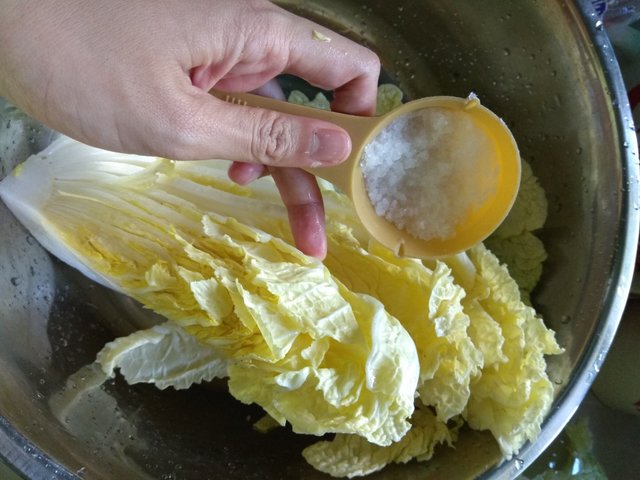
4. Check whether the white part of the cabbages are bendable. After that, rinse and wash the cabbages thoroughly for at least 3 times, especially between the white parts of the leaves. Drain well, cut side down.
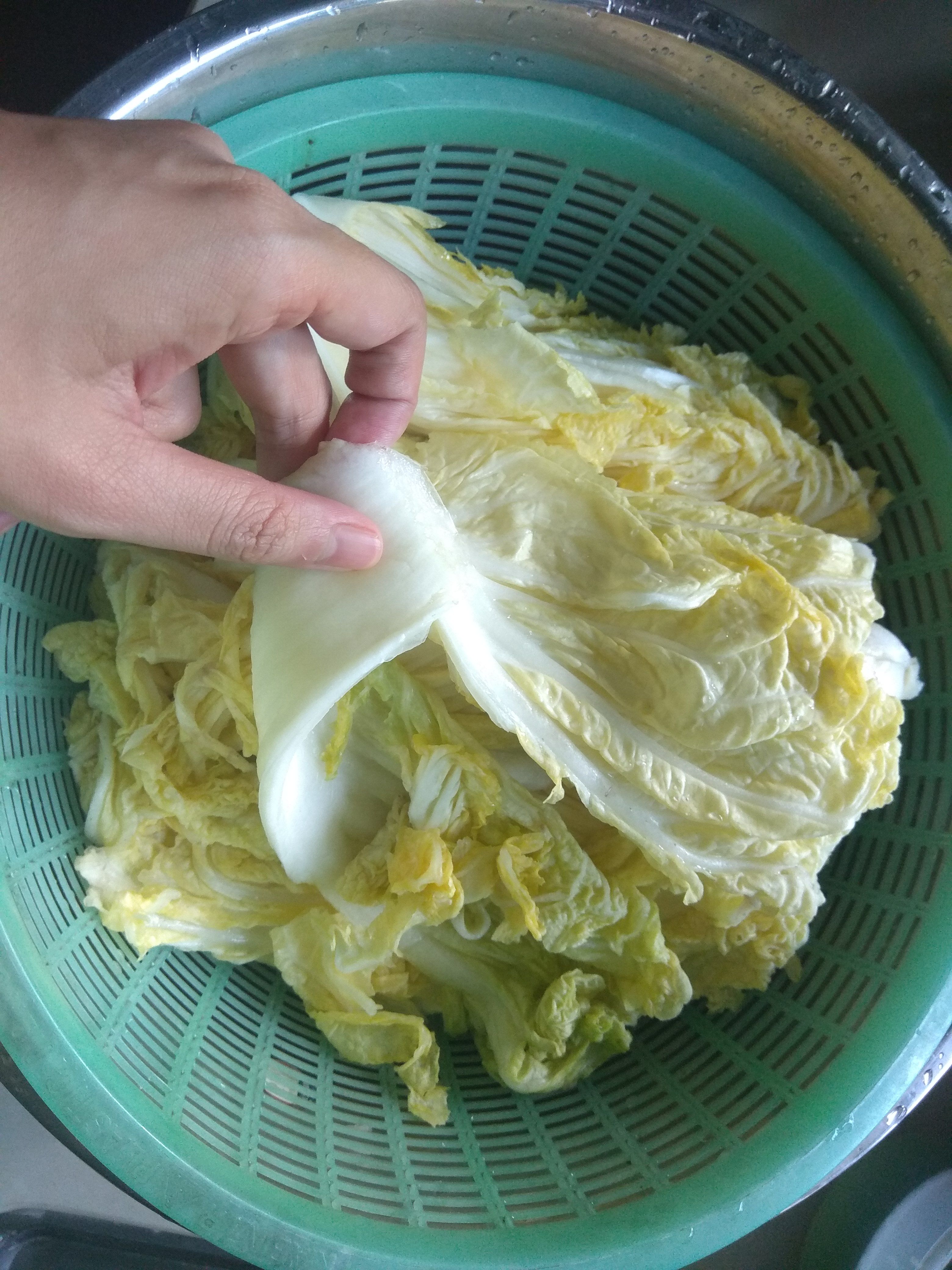
5. Meanwhile, make the "rice porridge" from the mixture of glutinous rice flour and water. The mixture should be in smooth paste texture and cool. Mix all the remaining ingredients together, include the "rice porridge", other vegetable cuts and some water. Mix well by hand with gloves and taste a little bit to suit your taste. After that, let it sit for 30 minutes to allow the flavors melt together nicely.
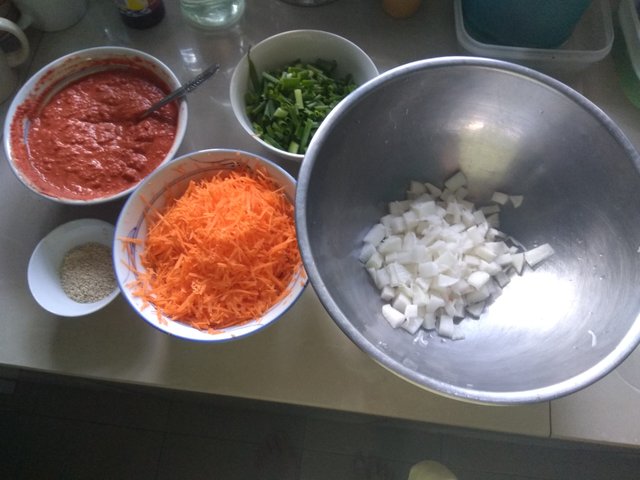
6. Cut the tough stem part from each cabbage quarter but leave an adequate amount of stem to support the leaves together. Place one quarter of the cabbage in the bowl along with the seasoning mix. Spread the seasoning mix on each leaf. Do not use too much on one quarter as you must remember not to neglect the other quarters as well. You can always top up the remaining seasoning mix into any cabbage quarters after that.
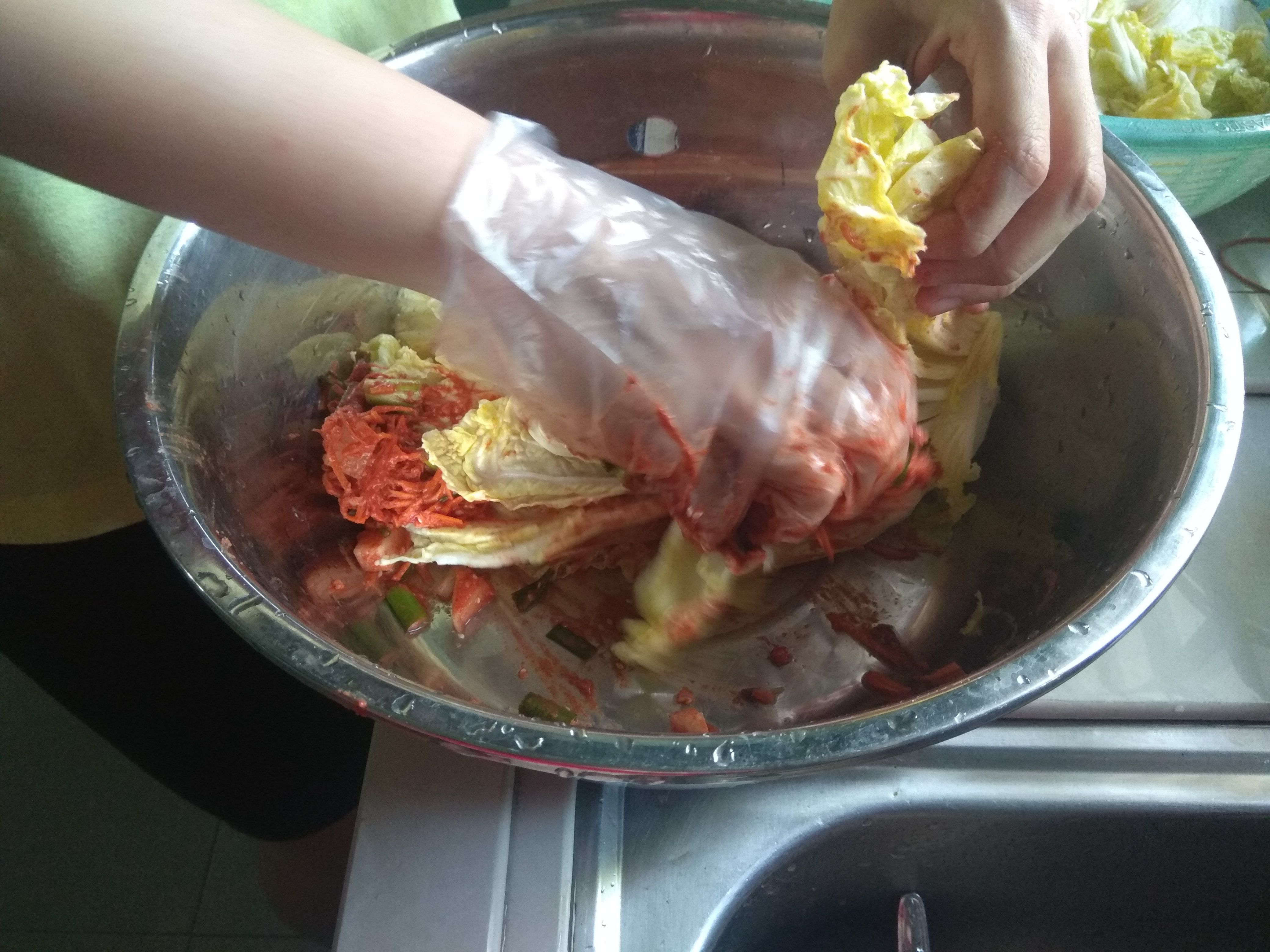
7. Fold the leaf part of the cabbage over toward the stem and nicely wrap with the outermost leaf before placing it. Store them in the air-tight glass containers. Once they been put into the containers, press down hard to remove the air pockets. Rinse the bowl that contained the seasoning mix with some water and pour over the kimchi.
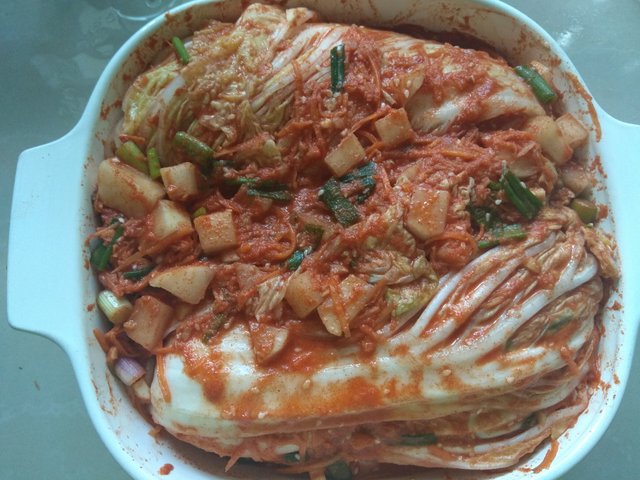
8. Leave it out at room temperature for at least 12 hours or to a maximum of 24 hours, depending on how fast you want your kimchi to be ripen. After that, store them in the fridge. You may start eating them anytime you want but it is best that you consumed them after a week as the flavors will be develop by then.
Tips:
- It is essential that you make the "rice porridge" as it act as a bind to enable the seasoning mix to stick the cabbages more and act as a healthy probiotics for our body.
- If you prefer your radish to be soften, you can marinate your radish cut with salt and sugar for 1 hour. After that, wash them thoroughly and drain them for at least 10 minutes.
- If you do not like seafood flavors or allergic to them, you can emit the fish sauce and dried shrimp with a substitute of kelp powder.
I hope that you guys enjoy this recipe!
And now , on my count...3...2...1... Say KIMCHI!!!!! :)